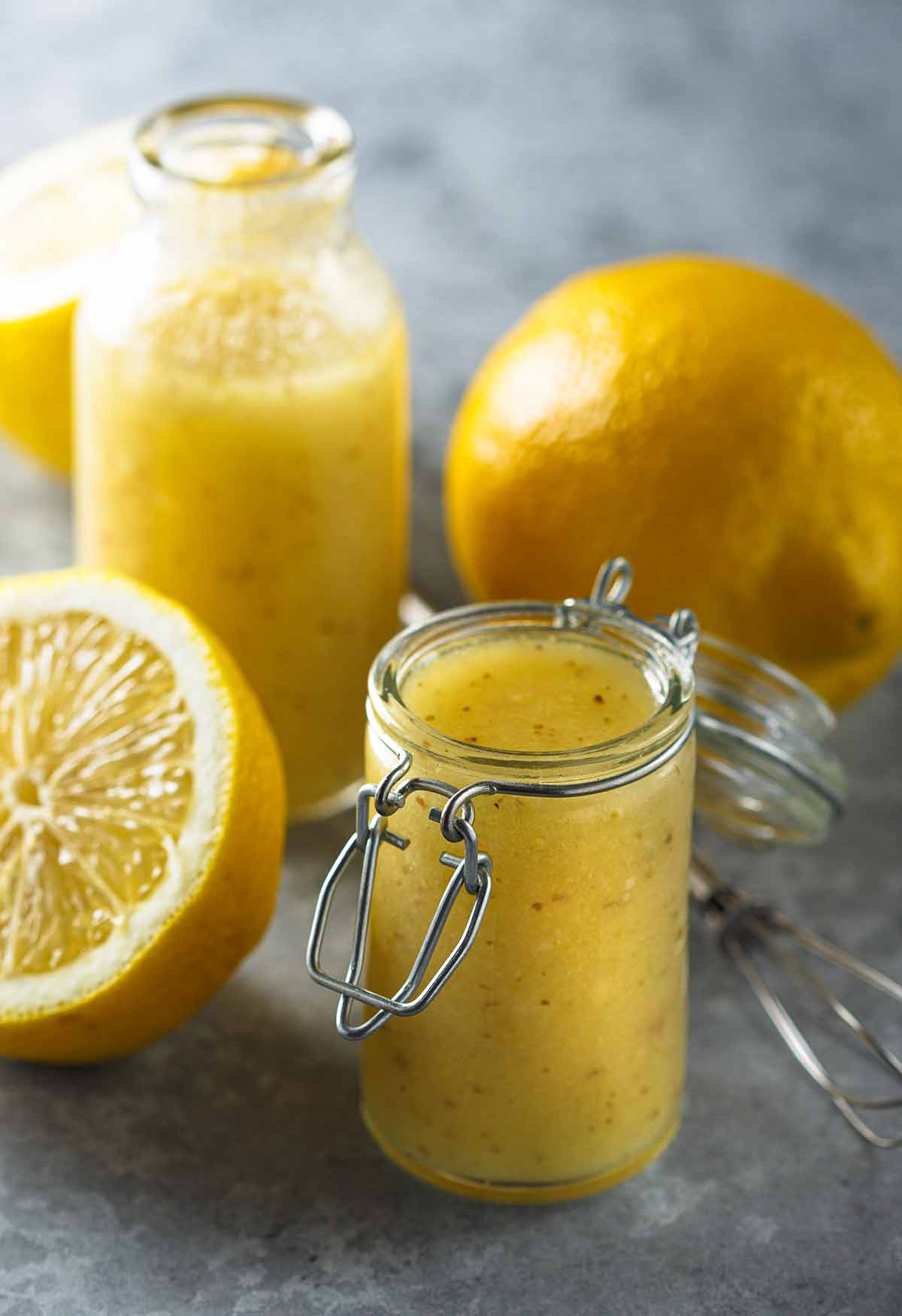
[Editor’s Note: It may take a moment—actually, a couple paragraphs—to comprehend the connection between fashion and food such as lemon vinaigrette. But patience, dear reader, as the point the author makes is a sound one.] The French eat well. The French dress well, as evidenced by this lemon vinaigrette recipe. And their style secret, reports a stylish friend, is this: one outfit. Which is good news. It demystifies the French mystique and it qualifies me for a French passport.
I’ve long stood steadfast by my rule: One girl, one outfit. In second grade I relied on a yellow floral maxi and copper enamel peace pendant. I spent much of college in itchy pink capris. But basic, which is to say black, is best.
Once you’ve settled on a look, it will come in handy all the time. The zip-back microfiber tank dress, for instance, works with sandals in summer, a blouse in fall, sweater in winter, and T-shirt in spring. It pairs nicely with a jacket for day or pearls for night. It shrugs off playground spatter or commuter grime. It can, in a pinch, double as a nightgown.
The repetitive look frees the budget for other concerns. Like double portions of shoes and handbags, which my friend assures me are the Hamburger Helper of the French fashion diet. After a year, the French retire the old and invest in the new. I’ve been stretching my black-on-black best a couple of seasons now and have yet to experience the urge to shop. I’m hoping this makes me doubly chic.
I don’t believe in changing salad dressing any more than clothes. I’ve been relying on this recipe for decades and it has yet to fail me. Stylish on any salad.–Leah Eskin
LC Dress To Impress Note
Just like the author said, this lemon vinaigrette recipe is stylish on darn near any salad. We know because our recipe testers said so—actually, they literally swooned over its versatility. Take a gander at their comments—all two dozen of them— found beneath the recipe for inspiration on what to drip, dribble, and drizzle this vinaigrette over any time you want to dress to impress.
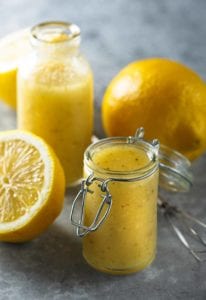
Lemon Vinaigrette
Ingredients
- 1 to 3 tablespoons fresh lemon juice, (from 1 small lemon)
- 1 teaspoon Dijon mustard
- 1 teaspoon granulated sugar
- 6 tablespoons olive oil
- Salt, to taste
- Finely chopped chives, (optional)
Instructions
- Pour the lemon juice into a small bowl. Whisk in the mustard and sugar.
- Drizzle in the olive oil, whisking constantly, until the lemon vinaigrette is shiny and smooth.
- Stir in salt to taste and, if you’re feeling fancy, chives. Dribble the lemon vinaigrette over anything and everything you please.

Nutrition
Nutrition information is automatically calculated, so should only be used as an approximation.
Recipe Testers’ Reviews
Not too much to say here other than this is a very easy and quick recipe if you want a fresh dressing for a weeknight salad. I made this lemon vinaigrette a few times over the past couple weeks and it’s always tasty. I love the addition of sugar, which is something I might not have thought of, but it really takes some of the edge of the mustard and the lemon’s acid. I tried the vinaigrette with chives and it’s great, but it’s still a top-notch dressing without them.
Once you start making your own salad dressings, it’s hard to ever go back. This is a fine lemon vinaigrette recipe to add to your repertoire. Light, fresh, easy, and appealing, it spans all the seasons and nicely dresses a wide range of types of greens. Tonight I served it on a 50/50 mix of baby spinach and a mesclun-type mix of spring greens, unadorned by any other vegetables or fruits. Perfect! I’m generally not a big salter, but I went two rounds with the salt, which I think really perked up this dressing.
If you’re looking for a simple, quick, successful, make-again-and-again dressing, you’ve picked the right one. I’m so happy to add this lemon vinaigrette recipe to my collection of great simple dressings. My small lemon yielded 3 tablespoons juice, so I had a 2 to 1 oil to lemon juice ratio going on and it was perfect. The dressing came together in just a few whisks and the taste was clean, vibrant, not overpowering, just perfect! This is the vinaigrette to use when you want to feature the great lettuces and tomatoes from your garden without overpowering them. Try it—you’ll like it. We added chives to the dressing, which gave it an extra spark.
Like the recipe’s author suggests, is there anything French women don’t do well?! This simple yet sophisticated lemon vinaigrette proves that fact. This is a no-fail recipe for everyone to keep in his or her cooking repertoire—a perfect combination of tang from the mustard, a touch of sweetness from the sugar, pepperiness of the chives, and tartness from the lemon juice. I don’t normally add sugar to my homemade vinaigrettes, but I liked the added flavor in combination with all of these other wonderful flavors. (The recipe says to use the juice of 1 small lemon, which measured out for me to be right at 2 tablespoons juice.) This was a yummy dressing for a simple salad of arugula, radishes, and shaved pecorino Romano cheese, but I think it would go with just about any variety of salad ingredients.
This was so simple yet so good, even in its simplicity. Some of the best recipes are the simple ones. This one is really just a base for a lot of interesting variations. The addition of chives, if you want to be fancy, is a good one, but you could add other things as well, such as shallots, tarragon, the options are limitless…well, maybe there are some limits, but you can get creative! That said, I wouldn’t advise adding too much to this lemon vinaigrette or you risk losing the beauty and, dare I say, power of this simple recipe, which lies in its ability to showcase the salad in a way that highlights its ingredients but doesn’t take away from them. Sometimes with salads the dressing becomes the star when it should be the supporting cast. This dressing allows the salad to shine, beautifully and simply. I made a basic salad with field greens, tomatoes, a little avocado, and some red onions. I added this dressing and what had been a little throw-together salad turned into a nice and elegant meal. The recipe, as written, is spot on. It needs salt, so to skimp would not do this vinaigrette any service. I hope that others see the beauty of this recipe and add it to their repertoire. I imagine you could add all the ingredients to a Mason jar and shake to combine rather than the streaming in the oil while whisking. I usually make dressings this way and it works well—less coordination involved!
A fine go-to lemon vinaigrette that’s good with a variety of ingredients—field greens, cucumbers, grilled asparagus, steamed potatoes, even chicken if gloppy mayonnaise isn’t your thing. The sugar rounds the sharpness of the lemon juice and mustard nicely, and the gentle onion flavor of the chives is pleasant. The dressing can be made in a bowl as instructed here, or you can put all the ingredients in a small jar with a tight-fitting lid and shake until the vinaigrette is emulsified.
I just had the best salad of my life. Seriously! I made this lemon vinaigrette for the first time tonight and I must say, my salad was dressed to the nines and then some. This vinaigrette is so simple to make and yet so seductively delicious. It was silken and melded perfectly with my salad ingredients. I made a Cobb salad with romaine lettuce, applewood-smoked bacon, cave-aged blue cheese, avocado, poached chicken breast, chopped hard-boiled eggs, and tomatoes. The vinaigrette perfectly balanced the flavors of the salad and made it outstanding! I usually don’t splurge with as large of an oil to acid ratio when I make homemade dressing, but I indulged tonight and it was so worth it! I made one minor change after tasting the dressing, which tasted great as-is: Per the request of my teen, I added an extra teaspoon sweetener—maple syrup—and it suited his palette perfectly. The dressing was so well balanced that no one flavor overwhelmed another. It was a huge hit and I will definitely be making this regularly.
This lemon vinaigrette was a basic but perfect dressing for any salad greens. My lemon yielded measured 3 tablespoons juice and I added lots of freshly ground pepper. I didn’t consider the chives “optional” since we loved the taste of the chives in the vinaigrette. I immediately found uses for this, including on blanched asparagus, thickly sliced heirloom tomatoes, and all sorts of green salads. This is a flavorful little vinaigrette that I’ll keep in a jar to use all week long!
Simple, light, and fresh describe this salad dressing. It’s not too oily or too citrusy and truly takes only minutes to make. I used a smallish lemon that I had on hand and some homemade mustard. The lemon yielded just about 2 tablespoons juice. I put all the ingredients in a lidded Mason jar and shook it up to emulsify everything. (I didn’t feel the need to dirty a whisk when I have been successful making vinaigrettes this way for years.) I opened it up, added salt to taste, and then shook it up again. It remained blended until the salad was ready to be dressed. I will be making it again tomorrow night and adding either chives or tarragon to the mix. It’s a very versatile dressing to have in your arsenal.
It takes less time to make this lemon vinaigrette than it does to read the note that precedes the recipe. I’m a huge proponent of homemade salad dressings, and this one is simple, quick, and tasty. I Imagine that it would be great with the addition of any herbs, but as is it has a fresh lemon taste. Many salad dressings make a large quantity that one never uses up, but this is the perfect amount of dressing to use for dinner and then have on hand for the next couple of nights.
I’ve never understood why anyone would need to buy bottled salad dressing. It’s very easy to make and you control the ingredients. The only issue I’ve had, since I never measure anything, is that some batches of vinaigrettes are better than others. This lemon vinaigrette recipe makes a wonderful salad dressing that has been consistently wonderful every time. Just follow the directions. I do think that a vinaigrette like this needs to dress good ingredients. I used lovely organic salad green, along with various fresh vegetables. It was lovely with roasted asparagus on the salad. Thinly sliced fennel was also very nice one day. This will definitely dress many more salads to come.
I loved this dressing recipe. It has an amazing zip to it. I wondered whether the ratios would be off, but it mixed very well. I used it on a salad of fresh greens and citrus and it worked beautifully. I also used some over a chicken salad with mandarin oranges and it tasted great on that, too. I left out the chives simply because I didn’t have any on hand. I used my OXO juicer instead of squeezing the lemon by hand. Looking forward to trying this one with Meyer lemons. Great recipe.
I made this for my parents while we were visiting them on a warm weekend evening. I should mention that my parents never eat anything but their homemade balsamic and extra-virgin olive oil dressing, so I literally had to make this on the sly. The salad was enthusiastically received and disappeared immediately. I poured the lemon vinaigrette over a combination of Boston bibb, radicchio, a bit of romaine, and some chopped avocado. The brightness of the lemon was the perfect foil for a warm spring night and a welcome addition to my typical vinaigrette repertoire, which features sherry vinegar and Dijon mustard. The lemon produced just over a tablespoon juice and was the perfect amount. I added about 1 teaspoon chives to the dressing and sprinkled another 1/2 teaspoon over the salad. In a word, perfection!
This is a classic French vinaigrette recipe. It can be varied with different acids, such as a Champagne vinegar rather than the lemon juice. It can be made with or without the mustard (but if you don’t add mustard, the emulsion will not hold for very long). You can add finely chopped shallots in place of chives. I suggest using a good-quality, extra-virgin olive oil, as this will affect the overall quality of the dressing. I used a hand-held lemon squeezer to juice the lemon, which yielded 3 tablespoons of lemon juice. This gave a 2 to 1 ratio of oil to acid, which worked fine for this recipe, even though the classic ratio is 3 to 1. I found the dressing to be a little sour, and so I added an additional teaspoon sugar. This turned it into the perfect dressing I was expecting. A couple suggestions when making a vinaigrette: All of the ingredients should be at room temperature; the best way to taste it for seasoning is to taste it on a piece of lettuce rather than straight up; keeping the leftover dressing in a glass jar will allow you to re-emulsify it by simply shaking the jar.
I’ve been trying all sorts of different salad dressings lately with various vinegars, oils, and herbs. Some have been quite good, others….well, let’s just say that once is enough. After trying this lemon vinaigrette recipe, I have to agree that it is the “little black dress” of salad dressings. I ended up using 2 tablespoons lemon juice. My lemon was probably larger than called for and I could have squeezed more juice from it, but I decided that more juice would be too tart. The sugar adds a nice balance to the lemon juice and mustard without being overly sweet. I chose a fairly mild olive oil, because I didn’t want it to dominate the wonderful springs greens that I was using. I didn’t measure the chives, but I did cut off a generous handful. I think the chives make the dressing more “stylish.” Except for a special salad that calls for a specific dressing, this will be my one and only.
The dressing was a good, basic vinaigrette. It had a nice tartness from the lemon with overtones of mustard. I used a strongly flavored olive oil, but it didn’t overpower the lemon or the mustard. After I tasted the lemon vinaigrette, I added the zest from the lemon. It gave the dressing an added lemon kick that I liked. I didn’t use the optional chives. The mustard was a little more prominent that I would have liked right after I made the dressing. The next day the mustard was muted and the lemon was the dominant flavor. I will definitely make this the day before I plan to serve it. The dressing stayed nicely emulsified, even 30 minutes after I first mixed it.
My favorite salad is a large bowl of greens lightly dressed with a very simple dressing—usually just oil and vinegar or lemon juice, maybe a pinch of salt and a grind of pepper. And I never, ever measure. But no more, because this simple recipe makes the most sublime, perfect dressing for fresh greens—or, probably, anything else. Thank you, thank you to the author for taking the time to determine the exact proportions! My smallish lemon yielded 2 tablespoons juice. I added Grey Poupon mustard and organic cane sugar, then whisked in a Portuguese extra-virgin olive oil and added a pinch kosher salt. I tossed a tablespoon or two with a bowl of fresh baby arugula and went to salad heaven. From now on, this is my house dressing. Sigh.
Sometimes it’s nice to be reminded of the simplest recipes. This recipe is exactly that. It’s also the perfect light spring vinaigrette. I used it twice, once on baby spring greens and once on roasted asparagus, and each time it was just right—fresh, bright, citrusy, yet not overpoweringly lemony. A nice change-up from my usual wintertime balsamic vinaigrette. I will be putting this balanced classic back into the rotation.
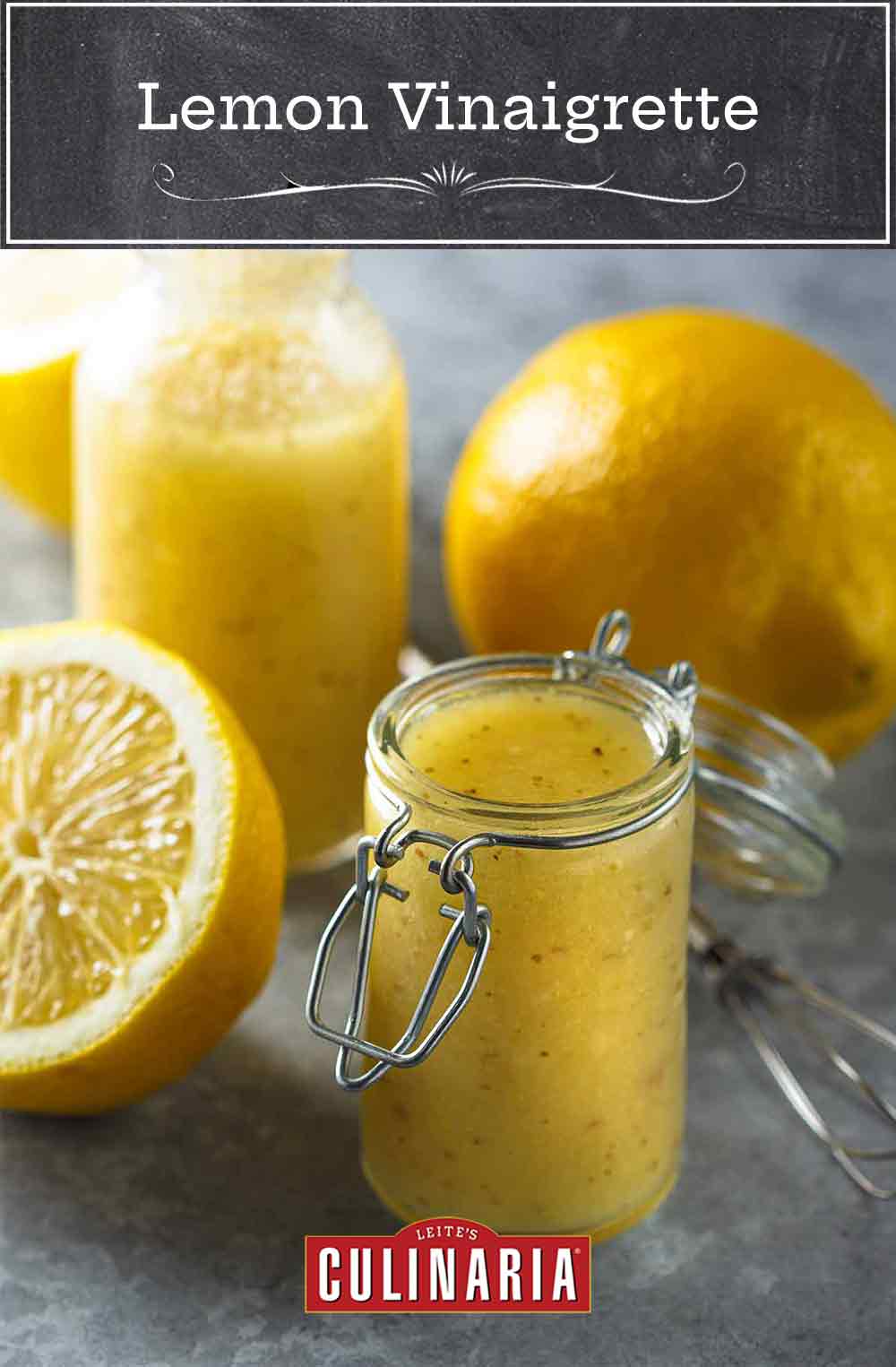












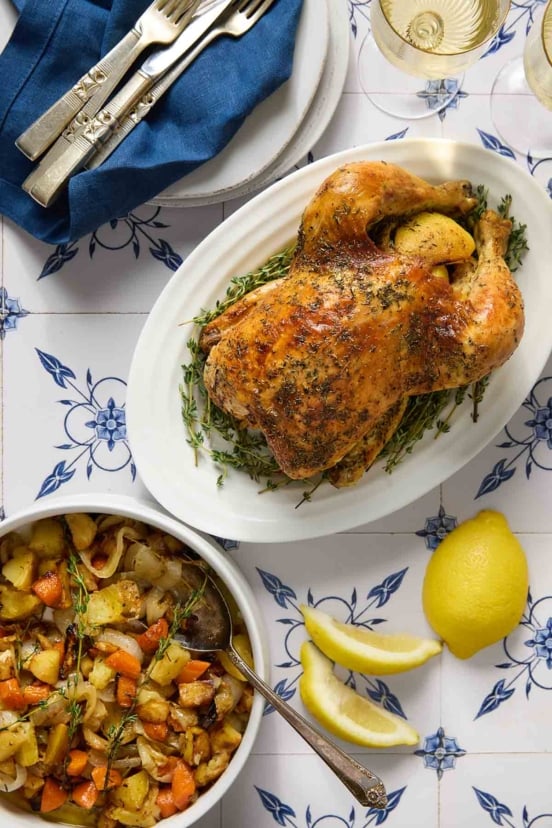
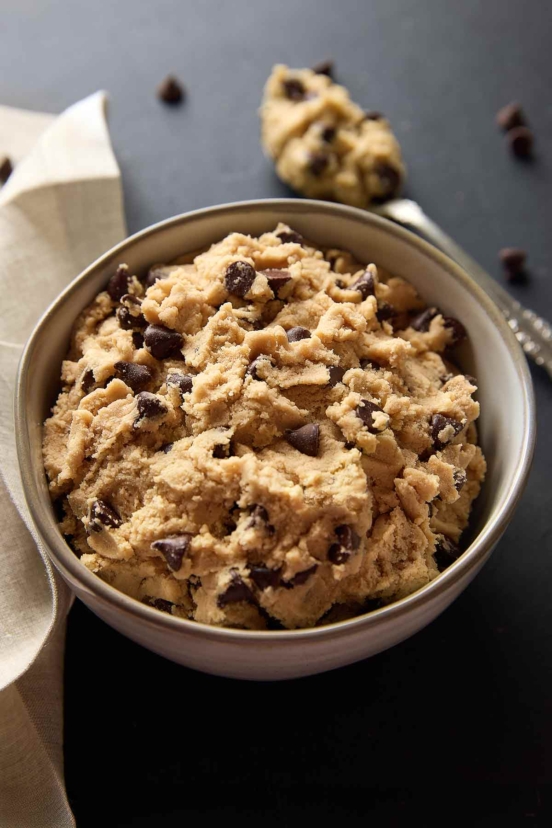
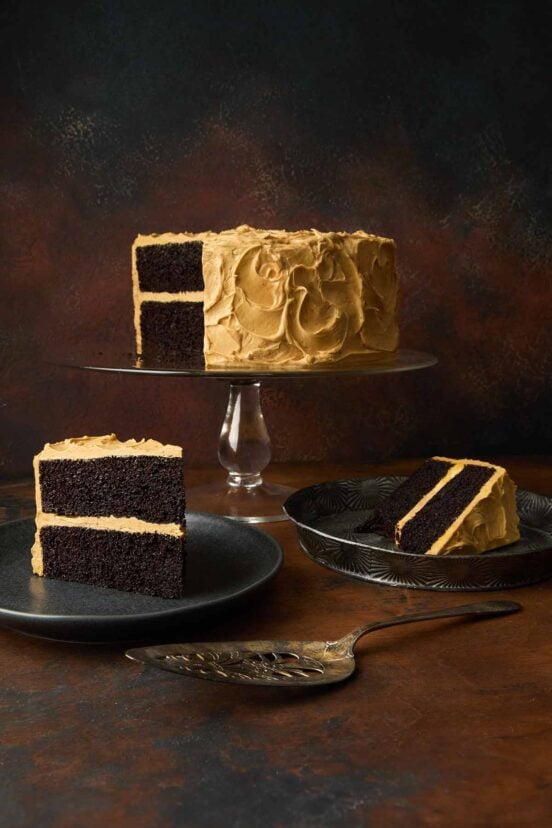









I have been making a similar lemon vinaigrette for years with a few small changes based on what I learned during a cooking course at La Varenne in Paris in the 1980’s. First, like the French, I really dislike sugar in my dressings. Instead, I roast a head of garlic and squeeze one or 2 cloves into the dressing (the roasted garlic adds the perfect sweetness) or just mash a clove of garlic with a little kosher salt and a good knife to form a paste and add that. Always use kosher salt and definitely add fresh ground pepper to the dressing as well as to the salad just before serving. Maille brand dijon has better, clearer flavor than Grey Poupon. Agree with the reader who uses a mason jar to vigorously shake and then store the dressing. If you’re out of lemons Champagne vinegar makes an excellent dressing too.
Thanks for those great suggestions, Nancy.
Where, please is the nutritional info? I click on the link and it doesn’t go anywhere. Thanks.
Marguerite, if you toggle the Metric button, the metric appears in the recipe. For this, only the olive changes. The other amounts are too small to covert.
Marguerite, if you click on the ‘show nutrition’ button below the recipe instructions, a box with the nutritional information should pop up below that. It may take a moment.
What a terrific dressing to have in your arsenal. Why would anyone buy a chemical-filled store-bought salad dressing ever again? I’ve made similar vinaigrettes in the past, but this one called for sugar. I was curious as to how it would turn out. I’m not a big fan of whisking, so I just put all the ingredients in a jar and gave it a vigorous shake. It turned out great. My lemon produced 3 tablespoons juice. I felt it was the perfect balance. I chose not to add the chives, just because I didn’t have any on hand. I do plan to try this again when I have some. One noteworthy ingredient I used was the sugar: I only use turbinado sugar. We loved it and, as we eat a lot of vegetables in our family, I’ll likely keep a batch in the fridge at all times for dressing salads and veggie dipping.
That’s great to hear, Mike!